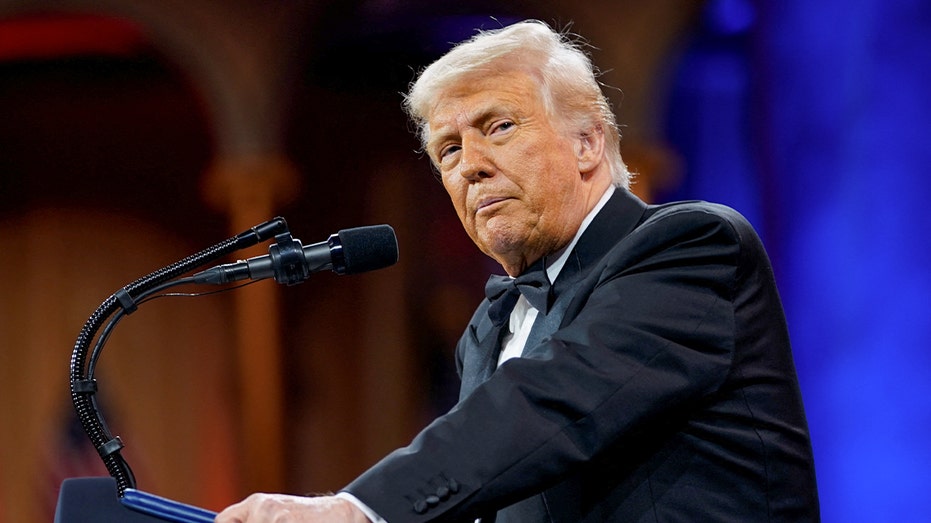Tariff Pause Shakes Up Global Trade Strategy
In a bold move that’s already sparking worldwide conversations, former President Donald Trump announced a significant escalation in tariffs on Chinese goods—raising them to a staggering 125%. At the same time, he declared a “tariff pause” for other nations, dialing down reciprocal tariffs to 10% for 90 days. This strategic shift is causing ripples not only in Beijing but across the globe.
Why Did Trump Increase Tariffs on China to 125%?
The reason? According to Trump, it boils down to a perceived “lack of respect” from China. On his Truth Social platform, he shared his frustrations:
“At some point, hopefully in the near future, China will realize that the days of ripping off the U.S.A., and other Countries, is no longer sustainable or acceptable.”
This marks a dramatic escalation in the long-running trade war between the U.S. and China, once again pushing economic tensions to the forefront.
The Background of the US-China Trade War
Before diving deeper into this tariff twist, it’s important to understand the background of the trade war that has been brewing for years.
What Sparked the Initial Trade Disputes?
The trade war began under the Trump administration in 2018, spurred by concerns over intellectual property theft, unfair trade practices, and America’s massive trade deficit with China. Tariffs were used as a blunt instrument to push Beijing toward more favorable terms. Despite multiple rounds of negotiations, tensions remained unresolved.
| Year | Tariff Action |
|---|---|
| 2018 | 25% on $50B Chinese goods |
| 2019 | Additional 10-15% on $300B goods |
| 2020 | Phase One deal signed, some relief |
| 2025 | Tariffs raised to 125% |
This latest hike is the sharpest escalation to date.
How Did China Respond to Trump’s New Tariff Spike?
Not one to back down, China clapped back swiftly.
China Raises Tariffs to 84% in Retaliation
Hours after Trump’s announcement, Beijing raised its reciprocal tariffs on U.S. goods from 34% to 84%. Chinese officials expressed deep disappointment and signaled that further retaliation could follow if tensions escalate.
“These measures are necessary to protect our national interests and domestic industries,” said a spokesperson from China’s Ministry of Commerce.
This tit-for-tat could threaten an already fragile global supply chain.
What Is the Tariff Pause?
The concept of a tariff pause is not new, but its strategic use here is highly calculated.
Trump’s 90-Day Tariff Freeze on Other Nations
Trump stated that more than 75 countries have reached out to negotiate trade reforms, currency issues, and non-monetary barriers. Under his direction, the U.S. has chosen to reduce tariffs to 10% for a 90-day window as a gesture of goodwill.
“At my strong suggestion, they have not retaliated in any way,” he said on social media.
This pause could provide breathing room for delicate trade talks while simultaneously isolating China on the world stage.
Why Did the EU, Japan, and South Korea Get Tariffs Anyway?
Even with the pause, some countries are still feeling the sting.
EU, Japan, and South Korea Tariffs Explained
In the same policy package, Trump implemented:
- 20% tariffs on EU products
- 24% on Japan
- 25% on South Korea
The European Union quickly retaliated with tariffs on $23 billion in U.S. goods, but left the door open for negotiations.
“We remain open to dropping tariffs should the US agree to a fair and balanced negotiated outcome,” the EU commission stated.
These moves showcase a nuanced dance between pressure and diplomacy.
Trump’s Inner Circle: A Coordinated Push
Who’s Advising Trump on Tariff Strategy?
Commerce Secretary Howard Lutnick and economic advisor Scott Bessent are among the key figures crafting this aggressive approach.
Lutnick posted:
“The world – except China – is ready to work with Trump on trade.”
This indicates a broader coalition may be forming, with Trump leveraging both pressure and partnership.
What Are the Economic Implications of a Tariff Pause?
Short-Term Relief, Long-Term Uncertainty
For countries benefiting from the 90-day tariff pause, it’s an opportunity to recalibrate their trade relationships with the U.S. It may also bring temporary cost relief to importers and exporters.
However, the long-term picture remains hazy. If the pause ends without agreements, tariffs could snap back into place, creating further instability.
Global Reactions to the Tariff Pause and Increases
Markets, Diplomats, and Industry Leaders Weigh In
- Wall Street reacted with mixed signals: tech stocks dropped while manufacturing showed gains.
- Diplomats from Germany and Japan expressed cautious optimism.
- Industry leaders warned of cost surges and uncertain investment climates.
The world is watching—and waiting.

China’s Trade Tactics Under the Microscope
Currency Manipulation and IP Theft Allegations
Trump has long accused China of manipulating its currency and stealing intellectual property. These allegations form the bedrock of his aggressive tariff stance.
Whether or not future administrations will carry this torch remains to be seen.
The Role of Multilateral Trade Agreements
Is the WTO Losing Its Grip?
Many experts argue that the World Trade Organization (WTO) is being sidelined. Unilateral tariffs, retaliations, and pauses undermine the multilateral framework the WTO was built to uphold.
Unless reforms are made, bilateral negotiations may become the new norm.
Will the Tariff Pause Lead to Long-Term Deals?
Opportunity or Just Optics?
The 90-day window is a chance to hammer out real change—but only if both sides come to the table in good faith. Skeptics fear it may be more about optics than outcomes.
Time will tell.
Will the Tariff Pause Lead to Long-Term Deals?
Conclusion: Tariff Pause as a Tactical Move in a Global Chess Game
Trump’s tariff strategy is nothing short of bold. By ramping up pressure on China while extending a partial olive branch to others, he’s trying to reshape global trade norms. The tariff pause could be a masterstroke—or a misstep.
One thing’s for sure: the coming weeks will be critical in determining whether the world moves toward trade harmony or deeper division.

